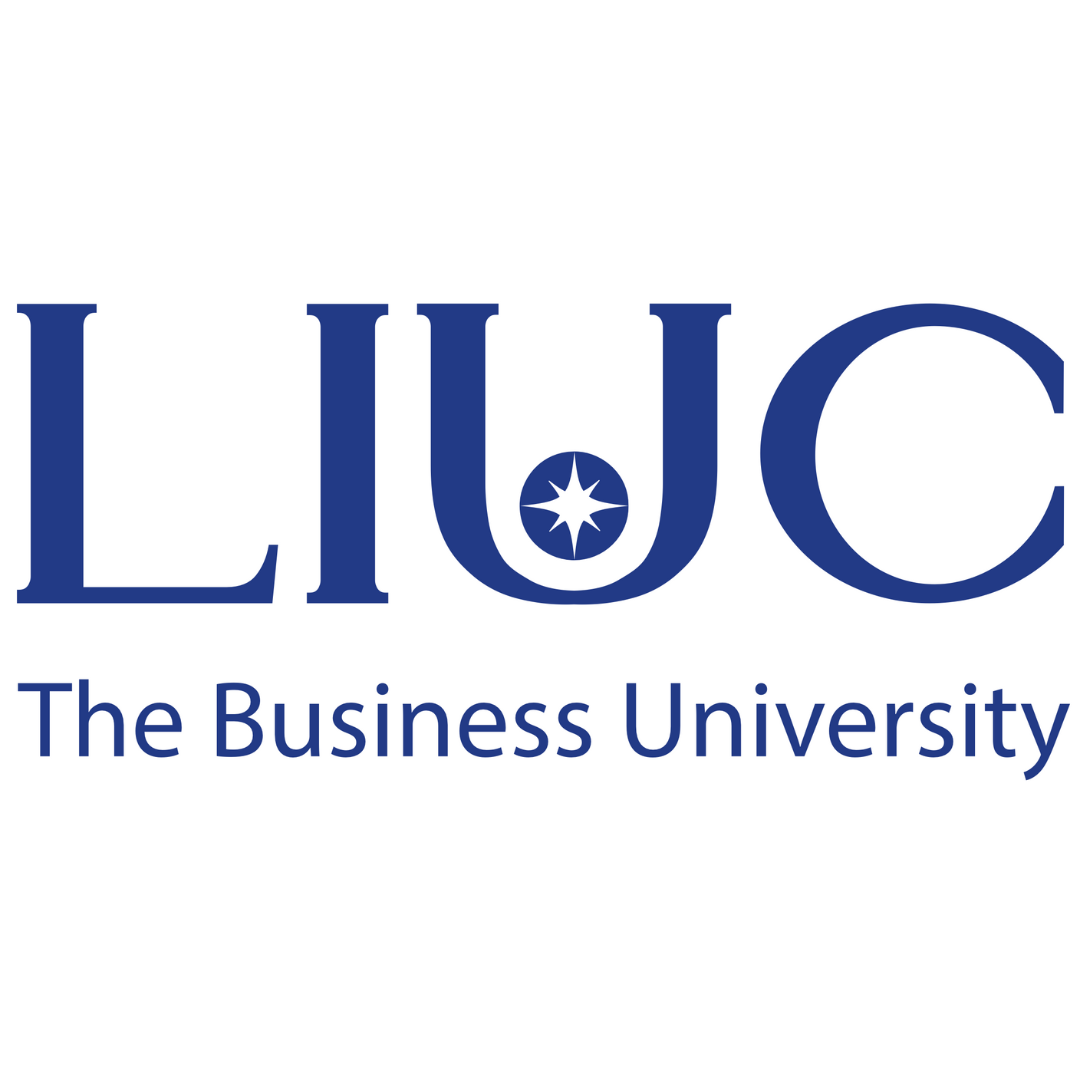📖Program Curriculum
Course modules
Compulsory modules
All the modules in the following list need to be taken as part of this course.
Fundamentals of Global Environmental Change
Module Leader
Dr Nick Girkin
Aim
Human activity is accelerating consumption of natural resources and emissions of pollutants into the environment, destabilising planetary life support systems. This module will introduce you to these processes, identifying the drivers, pressures, changes in state, and impacts on the environment, as well as examining potential responses and solutions. It will cover the physical science-based understanding of our planetary systems, how humankind is modifying these systems, and examine current and future efforts to address these key challenges through science, technology, and policy.
Syllabus
Planetary systems and the Gaia hypothesis.
The Anthropocene.
Dynamics of resource consumption, pollution emissions, population.
Safe operating space,
Effects of anthropogenic activities on planetary and human systems including climate change (past, present and future), ecology and biodiversity, natural disasters, air pollution, waste, agriculture, food security, sea level rise and coastal change, water quality and supply, planetary health and societal impacts.
Response options for sustainable environmental change including policy options, sustainable development goals, concepts of net biodiversity gain, net environmental gain, renewable technologies, doughnut economics, natural capital, ecosystem services, and valuation.
Intended learning outcomes
On successful completion of this module you should be able to:
Analyse key global environmental challenges and evaluate their underlying drivers of change.
Evaluate the consequences of global environmental change for planetary systems and human society.
Identify and critically appraise response options that aim to tackle the challenges presented by global environmental change.
Critically evaluate the importance of interdisciplinary solutions in resolving global environmental challenges.
Decision Science for Global Environmental Change
Module Leader
Dr Alice Johnston
Aim
The module introduces you to the main decision science approaches used to support decisions on global environmental change issues. It aims to promote an understanding of weight-of-evidence approaches used to inform real-world problems by research, industry, and government. Central to this is an understanding of the strengths and limitations of different approaches, the social, economic, and environmental trade-offs made during decision-making, and how real-world complexity and future uncertainty is accounted for. You will learn how to apply these approaches to evaluate different courses of action in response to environmental challenges related to land, water, and/or energy.
Syllabus
Key environmental challenges and the need for decision support tools.
Different stakeholders in global environmental decisions,
Weighing the evidence for different courses of action,
Big data; data analytical approaches; mathematical modelling; statistical inference; machine learning; information systems; spatial data science approaches,
Environmental, economic, and social trade-offs in decisions,
Accounting for real-world complexity and future uncertainty in decisions.
Intended learning outcomes
On successful completion of this module you should be able to:
Evaluate the strengths and weaknesses of decision science approaches for global environmental change.
Analyse data on complex environmental issues using decision science tools to weigh-up different courses of action.
Critically appraise the need for stakeholders to trade-off environmental, economic and social concerns, and the limitations of decision science approaches in accounting for real-world complexity and future uncertainty.
Cleantech in Water-Energy-Food Nexus
Module Leader
Professor Frederic Coulon
Aim
The aim of the module is to introduce you to the international priorities under the umbrella of the Water-Energy-Food nexus across sectors and scales. The module is premised on the understanding that environmental resources are inextricably intertwined and therefore there is a need of advancing a nexus approach to enable integrated and sustainable management of water, energy and food systems. You will learn and evaluate a range of innovative technologies that provide significant gains in terms of provision and management of energy, water and food and resources.
Syllabus
Water-energy-food nexus approaches.
Solar energy technologies, concentrated solar power.
Water and wastewater treatment technologies.
Bioenergy including anaerobic digestion and biogas upgrade/cleanup.
Nutrient and resource recovery.
Renewable energy.
Water and sustainable Agrifood systems.
Decision support technology.
Intended learning outcomes
On successful completion of this module you should be able to:
Critically appraise the key issues related to water-energy-food nexus challenges.
Critically evaluate the opportunities in the development and management of the water-energy-resource nexus, tailored to specific sectoral needs.
Appraise the key indicators for clean technologies.
Sustainable Environmental Solutions
Module Leader
Dr Michelle Cain
Aim
This module aims to introduce you to the real world environmental solutions that are being developed and in use already, to enable them to enter a number of sectors with up to date knowledge of current approaches. The module will provide you with an overview of the international climate and environmental policy landscape in which countries, sectors and industries are operating, and the scale of action required in order to fulfil current policy goals. You will work on case studies of sustainable solutions (e.g. in aviation, agriculture, transport, waste, etc) and evaluate the potential in these solutions to contribute to global climate or other environmental goals.
Syllabus
Environmental Policy – national and international, including climate, water, air, biodiversity, the Paris Agreement and Sustainable Development Goals. How to assess potential solutions towards achievement of policy goals.
Series of lectures with relevant experts to focus on sustainable environmental solutions in a range of sectors, for example: nature based solutions for water and climate; agriculture and food; transport; supply chains; energy systems; sustainable technology entrepreneurship; plastic; biodiversity; LivingLab.
Individual reports on sustainable climate solutions for a sector or sub-sector, based on appropriate metrics for the policy goal(s), including consideration of co-benefits and trade-offs with other environmental goals.
Intended learning outcomes
On successful completion of this module you should be able to:
Critically analyse environmental solutions based on appropriate metrics and tools in the context of policy goals.
Evaluate data and evidence on potential solutions to environmental challenges with colleagues to apply diverse expertise to a real world challenge.
Critically appraise and synthesise various sources of information in written and verbal form to create coherent arguments that providing effective solutions to global environmental challenges from technical, political, and social perspectives.
Elective modules
A selection of modules from the following list need to be taken as part of this course
Pollution Prevention and Remediation Technologies
Module Leader
Professor Frederic Coulon
Aim
The module introduces the extent and consequences of pollution in the environment, identifies and evaluates technologies for prevention and remediation and exposes you to using decision support tool and modelling to deal with pollution prevention and remediation.
Syllabus
Environmental pollution and prevention technology.
Contaminated land issues and market size.
Soil and groundwater remediation technologies.
Sustainable remediation practices.
Monitoring and modelling contaminants.
Hazard appraisal and risk assessment.
Decision support tools.
Intended learning outcomes
On successful completion of this module you should be able to:
Define and discuss the key issues related to environmental pollution prevention and remediation.
Critically appraise the range of remediation technologies for soil and groundwater.
Appraise the key indicators for sustainable remediation approach.
Select and evaluate accepted decision tools to assess remediation performance and end-points.
Water and Sustainable Agrifood Systems
Module Leader
Professor Tim Hess
Aim
Water is an essential factor of production in agrifood systems; whether for growing crops, supporting livestock or food manufacture. Globally, 70% of freshwater withdrawals are used for agriculture, but increasing demand for food means that this figure is likely to increase dramatically in the future. At the same time climate change is affecting supply and other demands on water are increasing. Mismanagement of water for food production has led to social and environmental problems in many places. Water is therefore a significant global risk to sustainable food production. This module will consider the water requirements of crop and livestock systems; the evaluation of the water related impacts and risks in producing locations; and management and technological solutions to minimise water related impacts and risks in food supply chains.
Syllabus
Introduction: Water for food; Water and climate risks in agrifood systems,
Soil water retention and water movement through soil/plant systems,
Water requirements for agrifood systems: Irrigation systems (surface, overhead and localised irrigation); Calculating irrigation water requirements; Water requirements for livestock; Water requirements for food industry,
Water footprinting: Water inventory; Weighting for impact; Hotspot identification,
Evaluating and managing the performance of irrigation systems including yield response to water, irrigation scheduling and efficiency,
Impacts of droughts and water scarcity; Climate change,
Responding to water footprints; Water risk, resilience and adaptation.
Intended learning outcomes
On successful completion of this module you should be able to:
Evaluate the role of water in crop and livestock systems.
Design and evaluate management and technological solutions to minimise the water-related impacts and risks to crop and livestock production systems in food supply chains.
Critically appraise the role of water in future challenges to food sustainability.
Waste Management in a Circular Economy: Reuse, Recycle, Recover and Dispose
Module Leader
Professor Frederic Coulon
Aim
The aim of this module is to provide specialist understanding of the major processes used for municipal waste management and their role within an integrated – circular - waste management system. In particular the module will focus on the bottom three points of the waste hierarchy: recycle, recover and dispose.
Syllabus
Integrated waste management: appraisal of national and international legislation and policy.
Circular economy in the waste context.
Waste properties and characterisation. Mechanical biological treatment, pre-treatment, biodegradable wastes, coupled technologies, technology performance and managing environmental impacts.
Landfill: biochemistry, leachate and gas production.
Biowaste technologies: composting, AD and other biorefinery processes.
Thermal treatment: incineration, gasification, pyrolysis, combined heat and power, waste to energy, solid recovered fuel.
Intended learning outcomes
On successful completion of this module you should be able to:
Appraise the role of waste treatment technologies under the circular management agenda - drivers, selection, pre-requisites requirements, waste types treated.
Apply the concepts and principles of the biological processes for treating organic waste to the waste degradation context and evaluate and calculate energy potential.
Explain why landfill gas (LFG) is treated and how to control, collect and treat the gas. Appraise the parameters contributing to LFG production and composition, the risks and production controls and calculate their potential impact.
Critically assess specific waste/feedstock treatment processes involved into a circular economy (e.g. MBT, AD, biorefinery).
Apply the concept and principle of waste management into a circular economy.
Land Engineering Principles and Practices
Module Leader
Dr Lynda Deeks
Aim
Natural landscapes and built environments can be engineered to optimise the goods and services delivered to society, including provision of natural resources and the regulation of water and carbon. Technologies that prevent and/or reverse land degradation can be devised and implemented to ensure sustainable use of finite land resources. Environmental engineers and land managers need sound understanding of the environmental properties that determine land capability for any given desired end use, as well as the interrelationships between soil, water, vegetation and built structures. This understanding is grounded in basic soil physics, hydrology, hydraulics, geotechnics and agronomy. With this background, appropriate interventions such as soil erosion control and slope stabilisation can be designed and implemented to improve inherent land quality. The required skills set also informs the management of environmental projects involving land forming, reclamation, restoration and protection, which require selection, design, engineering and maintenance of appropriate structures.
Syllabus
Site Assessment: Concept of land capability and land quality
Criteria used for assessing land capability and its classification.
USDA scheme, Canadian Land Inventory, urban land capability scheme.
Land forming, earth moving and landscape modification.
Earth works design
Defra recommendations
Water retention - ponds
Machinery and equipment used (+ visit to Tarmac or similar)
Geotechnics: Slope stability
The stability of shallow and deep slope failures
Methods of slope stability calculations
Finite slope analysis etc.
Slope engineering for slope stability
Bunds and berms
Bioengineering
Biotechnical engineering
Surface erosion of slope forming materials
Soil erosion processes
Soil erosion consequences
Surface soil erosion control
Terraces
Check dams
Agronomic techniques (bioengineering)
Vegetation as an engineering material (bioengineering and biotechnical engineering)
Geotextiles
Top and sub soil management
vegetation establishment
site maintenance.
Intended learning outcomes
On successful completion of this module you should be able to:
Apply the concept of land capability to site assessment and carry out land capability classifications.
Explain how to design earthworks and select appropriate land-forming machinery/equipment.
Calculate the stability of slopes and design of simple support and stabilisation systems.
Undertake an erosion and risk assessment.
Devise strategies for the long-term management of top soil and subsoil in land engineering projects.
Technologies for Seeds and Crop Protection
Module Leader
Dr Zoltan Kevei
Aim
This module provides a critical appraisal of the role of the main plant-based technologies which can be used to advance sustainable crop production and food security. This includes a consideration of the importance of crop breeding, seed technology and crop protection with particular emphasis on future needs.
Syllabus
Seed industry:
Basic principles of genetics as applied to representative crop species.
Plant breeding strategies including conventional selection and marker assisted selection.
Genetic modification of crop plants.
Seed production and seed treatment technologies.
Agrochemicals:
Discovery and design of novel agrochemicals: screening, computer aided molecular design, formulation.
Insecticides, fungicides and herbicides: importance in food security - past and future, modes of action, regulation.
Biocontrol agents – principles and case studies.
Phytohormones and crop enhancers: agrochemicals to control plant growth and development.
Intended learning outcomes
On successful completion of this module you should be able to:
Explain the main strategies and technologies in producing new, improved varieties of crop plants.
Critically appraise the role of plant breeding and seed technology in delivering global food security.
Explain the process of developing a new agrochemical, and the main classes of agrochemicals currently and previously in use.
Critically appraise the main methods of biocontrol as an alternative to fungicides and insecticides.
Evaluate the contribution of research in developing plant-based technologies.
Process Emission and Control
Module Leader
Dr Zaheer Nasar
Aim
The aim of this module is to provide an understanding of the major air pollutants emitted by key industrial processes, the associated regulatory frameworks, and monitoring and control techniques. A further element of this module is for you to gain an in-depth knowledge of emission control strategies currently applied by industry, e.g. processes modification and implementation of appropriate control mechanisms.
Syllabus
Air Quality Parameters, pollution sources, their impact and regulation (UK and EU).
Bioaerosol emissions monitoring and sampling strategies.
Advanced data analysis and dispersion modelling.
Carbon capture and storage.
Specific pollutants: particulates, odour, bioaerosols and biogas.
Intended learning outcomes
On successful completion of this module you should be able to:
Explain the extent, impact and implications of emissions from industrial processes.
Describe the linkage between major emissions that contribute to air pollution to their related industrial processes.
Discuss emission abatement strategies currently applied in industry and design principles for each of the strategy.
Analyse a specific emission control scenario and apply the design principles to design an appropriate emission control systems.
Critically evaluate the efficiency of emission control systems based on operational and design parameters through case examples.
Good Ecological Status
Module Leader
Dr Pablo Campo Moreno
Aim
Water bodies are fundamental features of the landscape. Whether they are rivers, canals, wetlands, ponds, lakes, estuaries or the open coast, they are important habitats that support diverse ecological communities and provide essential services to society. Therefore, countries have developed regulations to protect the quality of these water bodies and methods to assess status. Around the world, quality is increasingly being assessed based on a wide set of physical, chemical and biological attributes of the water body. In the UK, quality is assessed based on its ecological and chemical quality under the Water Framework Directive (WFD), which became part of UK law in 2003. This module will provide you with an overview of WFD and other relevant water quality regulation and policy that govern the management and assessment of surface waters. It will also provide you with a background in ecological processes, aquatic communities, and survey design and data analysis to help those working in environmental water management to interpret water quality data in the context of the catchment characteristics and pressures.
This module is 20 credits.
Syllabus
Importance of water quality for human health, drinking water and the environment.
Water quality regulation and standards.
UK methods to assess the status of surface water bodies.
The physical and chemical attributes and processes structuring the biological community in aquatic ecosystems in the landscape (e.g. rivers, lakes, floodplains, estuaries and coastal zones).
Design of water quality monitoring programmes: sampling strategies, sampling methods, quality assurance, and data handling.
Water quality sampling & analysis: field sampling techniques and laboratory analysis methods.
Statistical analysis of ecological and water quality data.
Intended learning outcomes
On successful completion of this module you should be able to:
Explain the chemical, biological and hydromorphological processes and their interactions that determine the ecological status of a surface water body.
Evaluate water quality and ecological data based on knowledge of the sampling and data analysis methods, and analyse them to identify significant spatial and temporal differences.
Interpret ecological and water quality data based on scientific understanding of aquatic organism occurrence, movement and distribution and natural and anthropogenic influences from the river network and catchment.
Managing Flood and Drought Risks
Module Leader
Professor Jerry Knox
Aim
Extreme weather events are considered top global risks. Every, many places around the world are affected by droughts and floods leading to severe impacts on people, the environment, agricultural and industrial production, and water supply infrastructure. Climate change will increase the frequency and severity of these natural hazards. Thus, we need to improve our ability to characterise and understand their occurrence, duration and intensity; and to effectively implement management responses to reduce vulnerability and minimise their impacts. This module will focus on droughts and floods, covering their definition, forecasting, impacts and management options. The module focuses on impact and management responses in three key sectors – domestic, businesses (including agriculture) and the environment.
This module is 20 credits.
Syllabus
Introduction. Definition of risk. Roles and responsibilities in drought/flood management.
Drought metrics (Standardised Precipitation Index (SPI), SPEI, Drought Palmer Severity Index (DPSI), Potential Soil Moisture Deficit (PSMD) and their spatio-temporal relevance to different sectors.
Flood probability. Storm hydrographs and unit hydrographs. Probability and return period analysis of hydrological events. Design floods. Estimation of peak flows using Flood Estimation Handbook (FEH) methods.
Impacts of droughts on different sectors and the environment.
Soft and hard engineering strategies to mitigate drought/flood risk at local (individual business) and catchment scales.
Management approaches to tackle drought/flood risk at different levels.
Cost-benefit analysis for assessing different management options to tackle weather extremes.
Climate change and water-related weather extremes.
Intended learning outcomes
On successful completion of this module you should be able to:
Define drought and flood risk, their main characteristics and impacts, and policy landscape.
Calculate and apply different drought indicators (metrics) including assessing their utility and limitations.
Determine the likelihood of a flow of a given magnitude for gauged and ungauged catchments and catchments using the Flood Estimation Handbook (FEH and ReFH) methods.
Critically evaluate the role of alternative approaches to managing drought/flood risks.
Explain the impacts of climate change on the frequency and severity of drought/flood risks.
Risk Communication and Perception
Module Leader
Dr Simon Jude
Aim
The aim of this module to develop an appreciation of the importance of individual and group attitudes towards the perception of risk and how this may influence views, conduct and actions in the face of a range of risks including the development of communication methods to disseminate information about risk(s) to a range of audiences and how to determine its effectiveness.
Syllabus
What is meant by the perception of risk and how it varies with context.
Attitudes towards risk based on psychological, cultural and other dimensions.
The role of various societal groups (the media, NGOs, etc) in risk issues.
Models of the amplification and attenuation of risk.
Understanding the “fright factors” in risk perception and the development of trust.
Horizon scanning and scenario building tools for communicating future risk to individuals and organisations.
Communicating risk messages to individuals, groups and society at large and errors in communication.
Intended learning outcomes
On successful completion of this module you should be able to:
Describe the “non-science” influences in risk assessment and management using sociological and psychological theories relating to risk perception, attitudes and communication.
Identify and evaluate drivers that may influence individual or group perceptions and attitudes towards risk in specific scenarios.
Participate in the discourse on the roles in society of different stakeholders (e.g. the media, NGOs, academics, government) with respect to risk assessment issues and to be able to describe to others why they have the beliefs they hold.
Demonstrate skills in listening to concerns from different individuals/groups towards risks and the ability to enter into dialogue with such groups.
Develop effective means of communication to suit specific or general situations and how to demonstrate its effectiveness, and critique methods based on theories and evidence.
Environmental Policy and Risk Governance
Module Leader
Dr Simon Jude
Aim
A critical application of environmental risk management is in the development and appraisal of policy in central government and business. Policies are developed to manage environmental risks and selection of policy options must be informed by risk based tools and techniques. Doing so demands a comprehension of the technical, organisational and human elements of governing environmental risks and developing environmental policy.
This module draws these themes together by introducing core concepts and then illustrating these concepts with case studies spanning business and government, and finally application via a group exercise. Core lectures are supported by multiple case studies, a workshop and module assignment.
Syllabus
Risk governance.
Problem definition.
Environmental risk analysis and management.
Delivering organisational change, including implementation challenges and opportunities.
Environmental policy development and appraisal.
Policy instruments.
Intended learning outcomes
On successful completion of this module you should be able to:
Define the technical, organisational and human features of effective environmental risk governance.
Explain the environmental policy cycle of implementation and the basics of policy development and appraisal.
Critically analyse different types of policy instruments, including regulation, economic, voluntary and other measures, and identify the appropriate policy instruments to use in different contexts.
Compare and contrast environmental risk management techniques, selecting tools appropriate to the character of the risk in question.
Identify the requirements of risk management maturity and the pre-requisites of good corporate risk governance, including the importance of demonstrating value and aligning risk governance with other organisational functions.
Leading Corporate Sustainability
Module Leader
Dr Namita Shete
Aim
Global sustainability challenges are shaping the way business operates in the 21st century. Businesses are under increasing pressure from multiple stakeholders (for e.g. shareholders, customers, employees, society) to manage their positive and negative impacts with clear responsibility and strategic intent. Leading firms are choosing to respond to these challenges by generating sustainable value propositions to ultimately drive competitive advantage. For many this has meant re-engaging at the level of purpose and re-addressing their role in wider society and for human well-being.
This module outlines the major sustainability challenges and explores the capabilities organisations require to respond positively to them. It will engage you in gaining a better understanding of how corporate action can be best configured to promote responsible and sustainable business strategies. In doing so, it will demand management students (as future business managers and leaders) to reflect on the long-standing debate about whether or not ‘the business of business, is still business?
Watch video: An introduction to the Leading Corporate Sustainability module
Syllabus
The content is organised around the sustainability management ‘compass’ below:
The course content is structured as follows:
Leading Corporate Sustainability
Part 1: Setting the context
Context setting
Managing corporate sustainability
Social and environmental trends
The role of business
The role of business
Challenges and opportunities for business
Exploring possible futures
Playing an interactive future sustainable scenario board game
Part 2: Developing the capabilities
Setting a purpose
Formulating and implementing strategy
Working with stakeholders
Innovating
Collaborating
Valuing
Leading
Intended learning outcomes
On successful completion of this module you should be able to:
Identify global environmental and social trends and assess how these present both challenges and opportunities to business and analyse the capabilities businesses need to manage these.
Classify the potential stakeholder groups businesses can work with to develop and implement their sustainability strategies and evaluate collaborative approaches.
Assess the role of personal leadership in an organization’s values, strategic direction and ability to execute its sustainability strategy.
Critically assess the content and reporting of businesses’ sustainability strategies.
Design and recommend a sustainability-oriented innovation for a selected business.
Evaluating Environmental Sustainability









